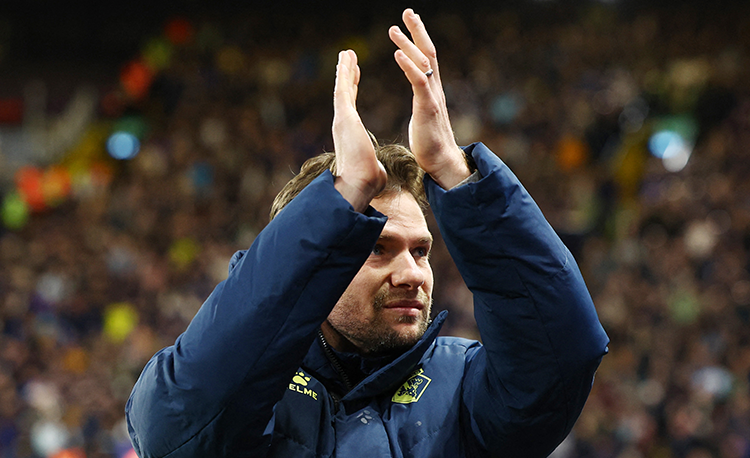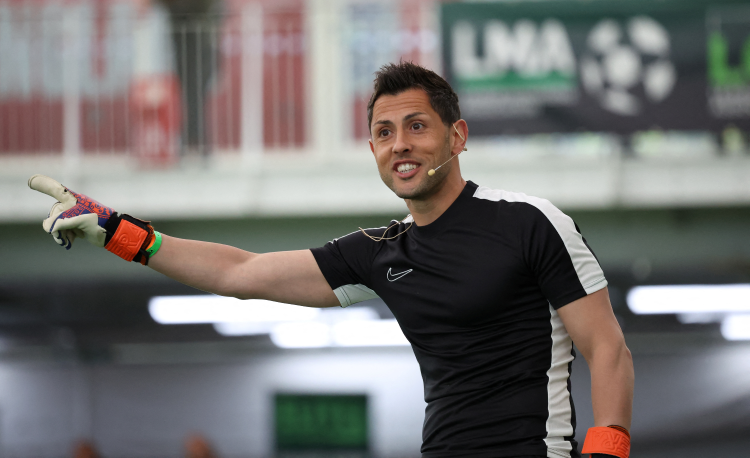Counter-pressing with attacking transitions
This session has many individual/unit and team actions in the practices, with a clear understanding of how to exploit defensive vulnerabilities and disrupting build-up play, and forcing errors in the opposition.
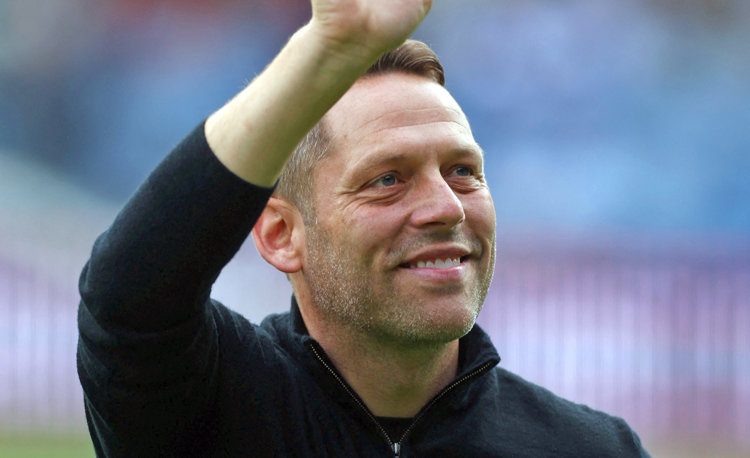
| Area | Full pitch |
| Equipment |
Mannequins, flat discs, mini goals |
| No. of Players |
Minimum 18 + 2 goalkeepers |
| Session Time |
Up to 90mins including rest
|
This session has many individual/unit and team actions in the practices, with a clear understanding of how to exploit defensive vulnerabilities and disrupting build-up play, and forcing errors in the opposition.
We focus on the quick shift between possession and penetration as a team to a mentality to counter-press from an attacking shape, forcing the opposition into areas of the pitch which we dictate.
I use these practices at least once per week, with a consistency of messaging and habits which are relatable to our game actions. I would use this specific session as soon as I go into a club, as it sets the tone and the intensity with which we want to play.
PASSING SEQUENCE
Set up as shown, in two groups. All players pass and follow, apart from the player at the top mannequins, where they will move to the mannequin left by the starting player [1]. This activity is a good warm-up and encourages competition with the other team as well as communication, thinking, movement and decision-making.
[1]

-
Blue players pass and follow
-
When player at top of drill receives the ball, they play one-two and run to starting mannequin
SIDE-BY-SIDE RONDOS
Set up as shown, 5+2v5, in a series of rondos so all your players are participating. One team has possession, with an attacking transition theme throughout. You can use goalkeepers if needed. Ten passes equal one goal [2a].
[2a]

-
Red team in possession
If and when the defending team wins the ball, they look to score in the mini goals while the possession team counter-presses [2b]; if they score in the mini goals, they keep possession and so on. If the opposition team win the ball back before transition with counter-press, they keep possession. We are looking for quick decision-making in and out of possession, good communication, positive actions individually and as a team, and how to exploit space with and without the ball.
[2b]
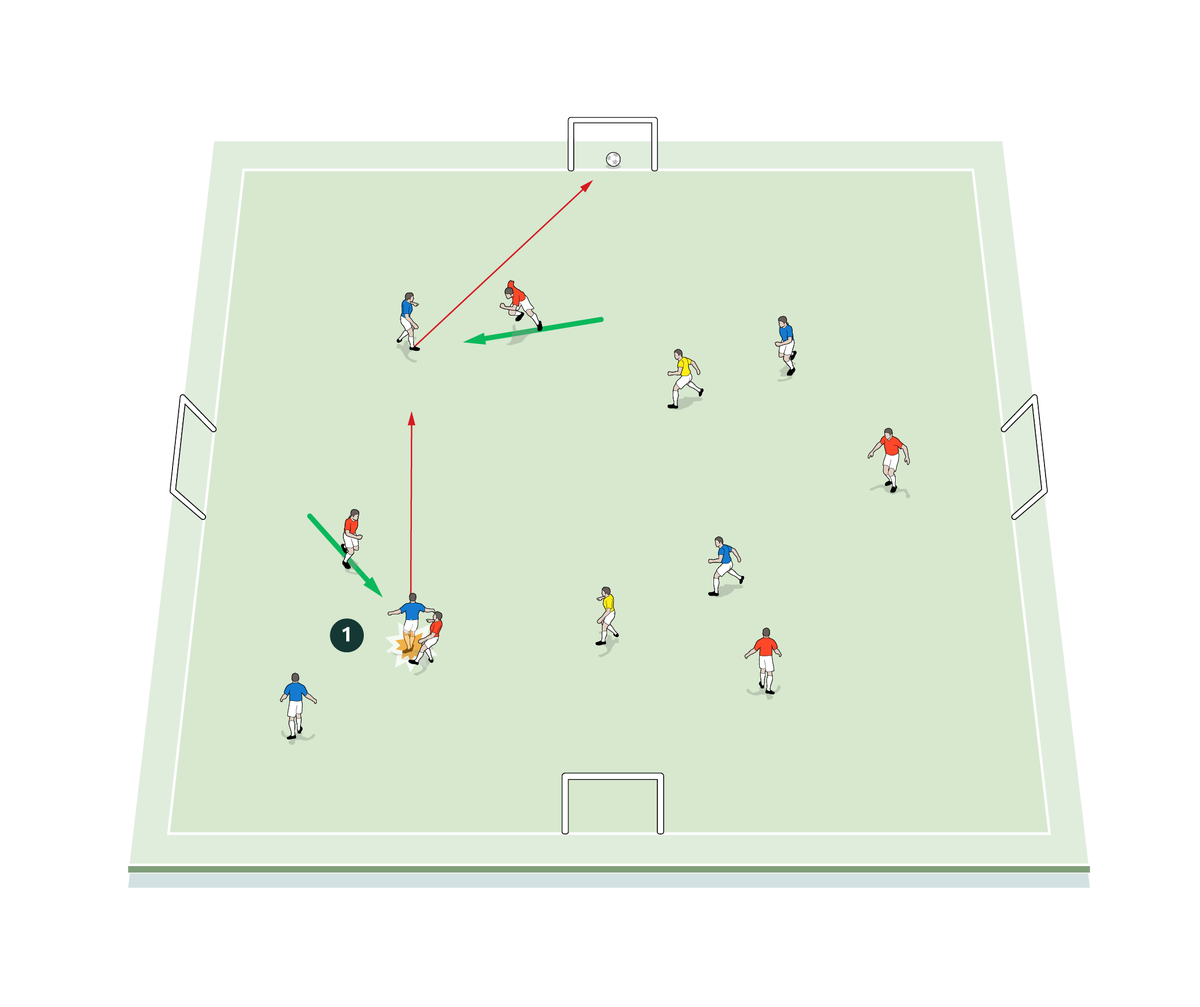
-
Blue team intercept and score in mini goal
SMALL-SIDED GAME 1
Set up as shown, with eight players plus a goalkeeper on each team, plus the two additional players to support the side in possession, so effectively we are playing 11v9. Here, the blue team are in possession [3a].
[3a]
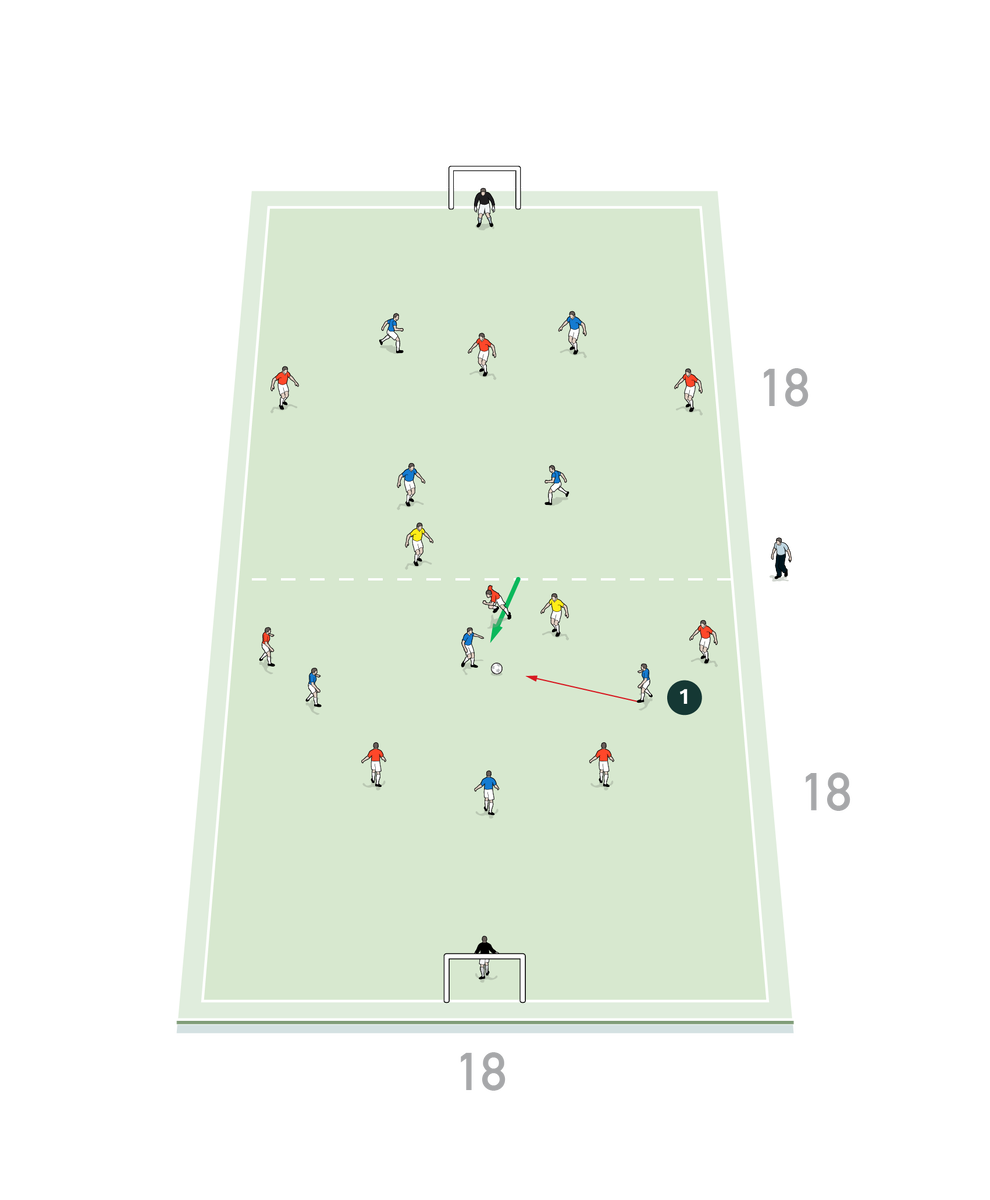
-
Blue team in possession
Ten passes equal one goal; you can restrict touches to three, two or one to manage the transitions. When the red team win possession, they are looking for a quick attacking transition to score in the half where they have won the ball back, and the blue team counter-press [3b]. You can adjust the dimensions of the space according to your players and their progress.
[3b]

-
Red player intercepts
-
The reds quickly transition to attack
-
The blue team counter-press
SMALL-SIDED GAME 2
Set up as shown, with the same division of players as in the previous activity [4]. Here, the red team are in possession. Ten passes equal one goal again, and you can restrict touches to encourage transitions. When the blue team win the ball back, they must score in the opposite half to where the ball was won, to encourage attacking transition, forward runs, passes etc. Green team should concentrate on the counter-press to instil goal habits.
When the players are comfortable and have an understanding individually and collectively of what outcomes we want as a group, we can set up with more risk, keeping them learning by setting challenges within the session.
[4]
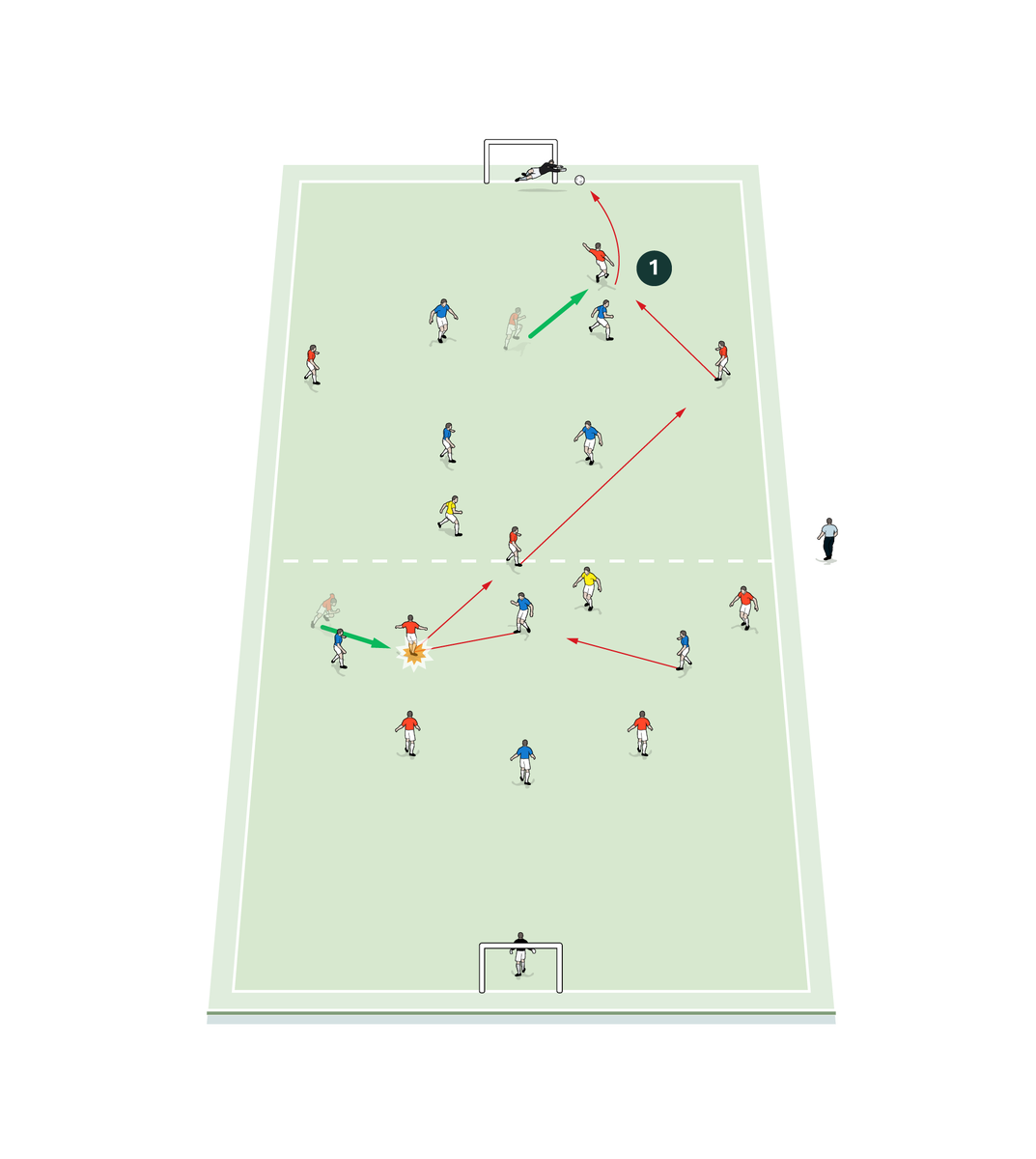
-
Red players exchange passes and shoot in goal in opposite half from gaining possession
COACHING POINTS
What are the key things to look out for technically and tactically?
With counter-pressing: first actions at the ball, around the ball, away from the ball; team coordination and communication; being proactive in decision-making and technically when, where, and how we want to press. With attacking transitions: explaining the benefits; how to exploit space and capitalise with penetrative runs, passes and link play; quick transitions from a defensive shape into strong finishing positions, with positive decision-making and explosive runs.
What are the typical mistakes players might make and how do I avoid them?
Make sure the players have a positive attitude to transitions, and see the benefits of positive decision-making both defensively and offensively. Some players may switch off to a counter-press from a poor proactive reaction of not wanting to make penetrative runs forward. You can educate them on how and why this will be beneficial, and cut the work/rest ratio to keep up the intensity.
Editor's Picks
Deep runs in the final third
Using the goalkeeper in build-up play
Pressing principles
Intensive boxes drill with goals
Penetrating the final third
Creating and finishing
My philosophy
Pressing initiation
Compact team movement
Coaches' Testimonials

Alan Pardew

Arsène Wenger

Brendan Rodgers

Carlos Carvalhal

José Mourinho

Jürgen Klopp

Pep Guardiola

Roy Hodgson

Sir Alex Ferguson

Steven Gerrard
Coaches' Testimonials

Gerald Kearney, Downtown Las Vegas Soccer Club

Paul Butler, Florida, USA

Rick Shields, Springboro, USA

Tony Green, Pierrefonds Titans, Quebec, Canada
Join the world's leading coaches and managers and discover for yourself one of the best kept secrets in coaching. No other training tool on the planet is written or read by the calibre of names you’ll find in Elite Soccer.
In a recent survey 92% of subscribers said Elite Soccer makes them more confident, 89% said it makes them a more effective coach and 91% said it makes them more inspired.
Get Monthly Inspiration
All the latest techniques and approaches
Since 2010 Elite Soccer has given subscribers exclusive insight into the training ground practices of the world’s best coaches. Published in partnership with the League Managers Association we have unparalleled access to the leading lights in the English leagues, as well as a host of international managers.
Elite Soccer exclusively features sessions written by the coaches themselves. There are no observed sessions and no sessions “in the style of”, just first-hand advice delivered direct to you from the coach.






